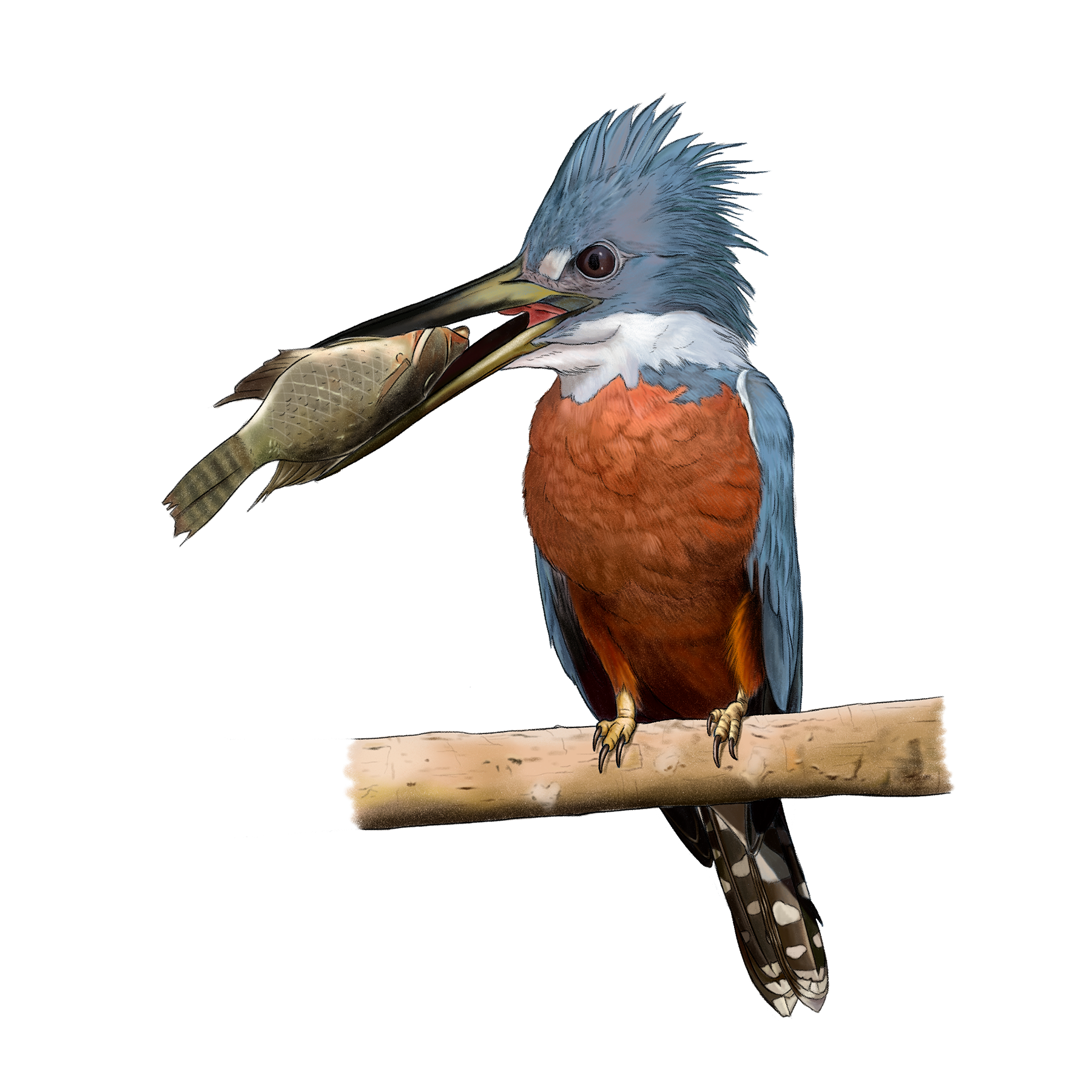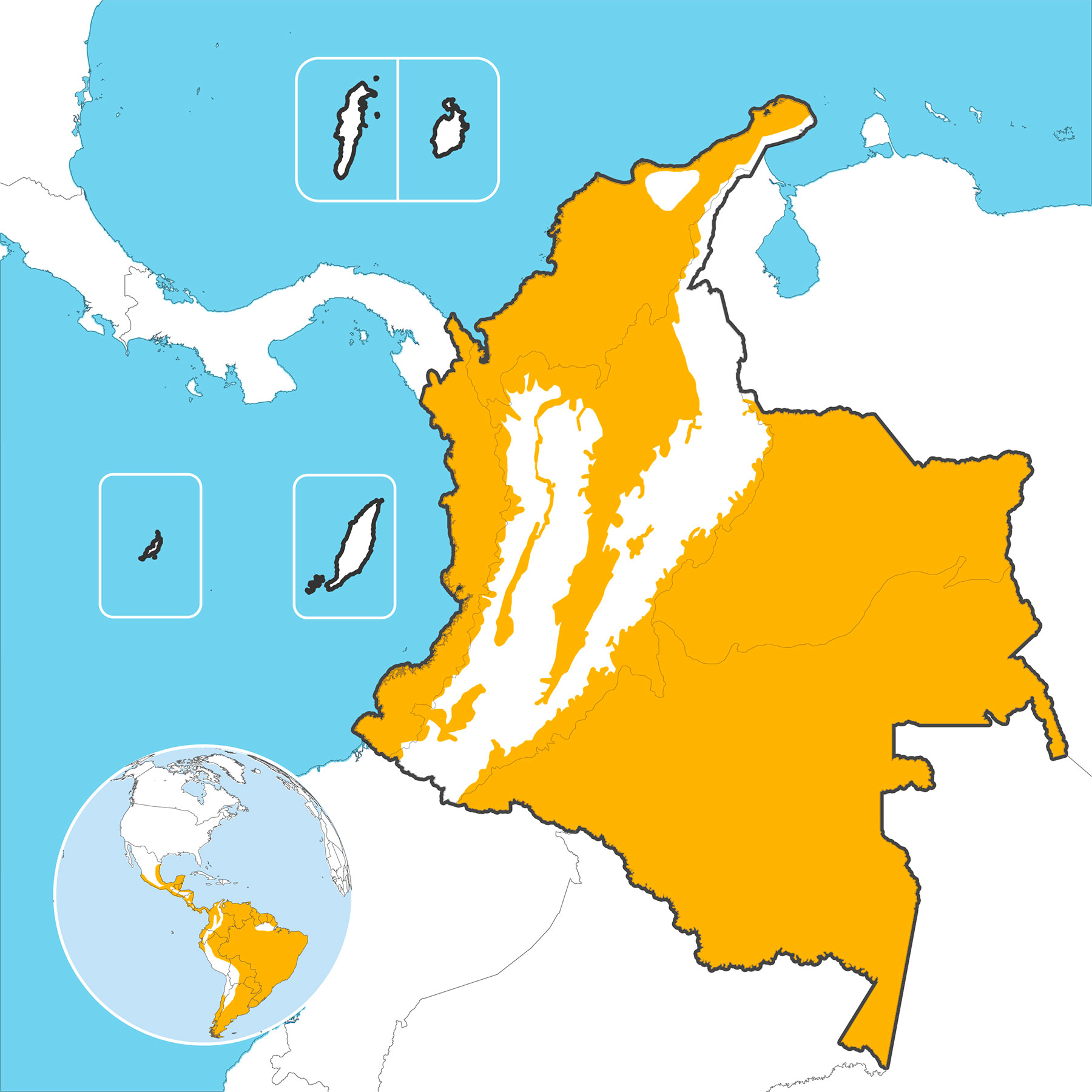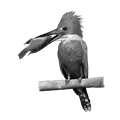
✎ Luis Mora

✎ Camilo Alméciga


Ringed Kingfisher
Megaceryle torquataCaribbean region
RECORRIDO VIRTUAL POR LA BIODIVERSIDAD DE COLOMBIA
Museo de Historia Natural
Universidad Nacional de Colombia

Ringed Kingfisher
Megaceryle torquata
Morpho-functionality
Feathers
The plumage of the Kingfisher has two coloration mechanisms, one chemical and the other structural. Orange feathers have small pigment granules whereas in blue feathers there are fluffy nanostructures with different dimensions, which produces different reflectance spectrum, these structures are also responsible for iridescence tones.
Body shape
Their body is hydrodynamic and this makes it easier for them to enter the water at high speeds during the hunt.
Lifecycle
The reproductive cycle in the north of the country begins in mid-February and during June and September in the southern Amazon. Like other species of the genus Megaceryle,they build their nests in ravines and on the banks of rivers and lakes, nests consist of galleries up to three meters deep that are excavated by the couple, at the end of these they lay between three and six eggs. The incubation time last 22 days. The young leave the nest around 33 or 38 days after hatching, before taking flight they spend some time on branches near the nest.
Ringed Kingfisher
Distribution
In Colombia it is usually found below 500 m, but there has been sightings up to 2500 m. It lives close to water sources such as wetlands, swamps, rivers and estuaries.
Distribution area






